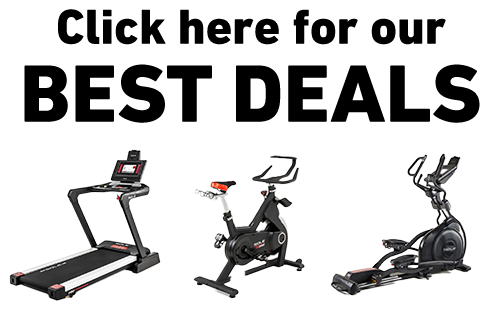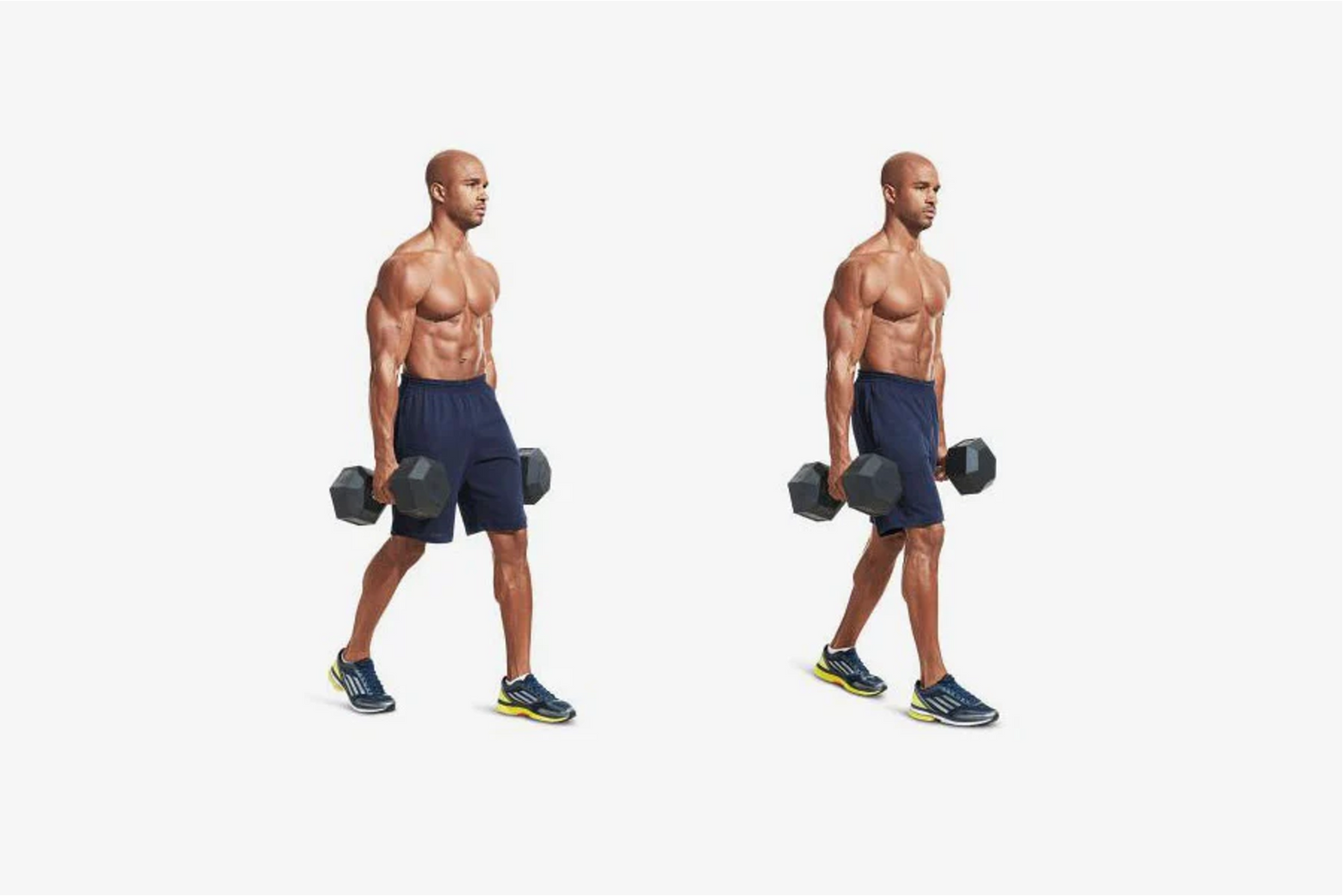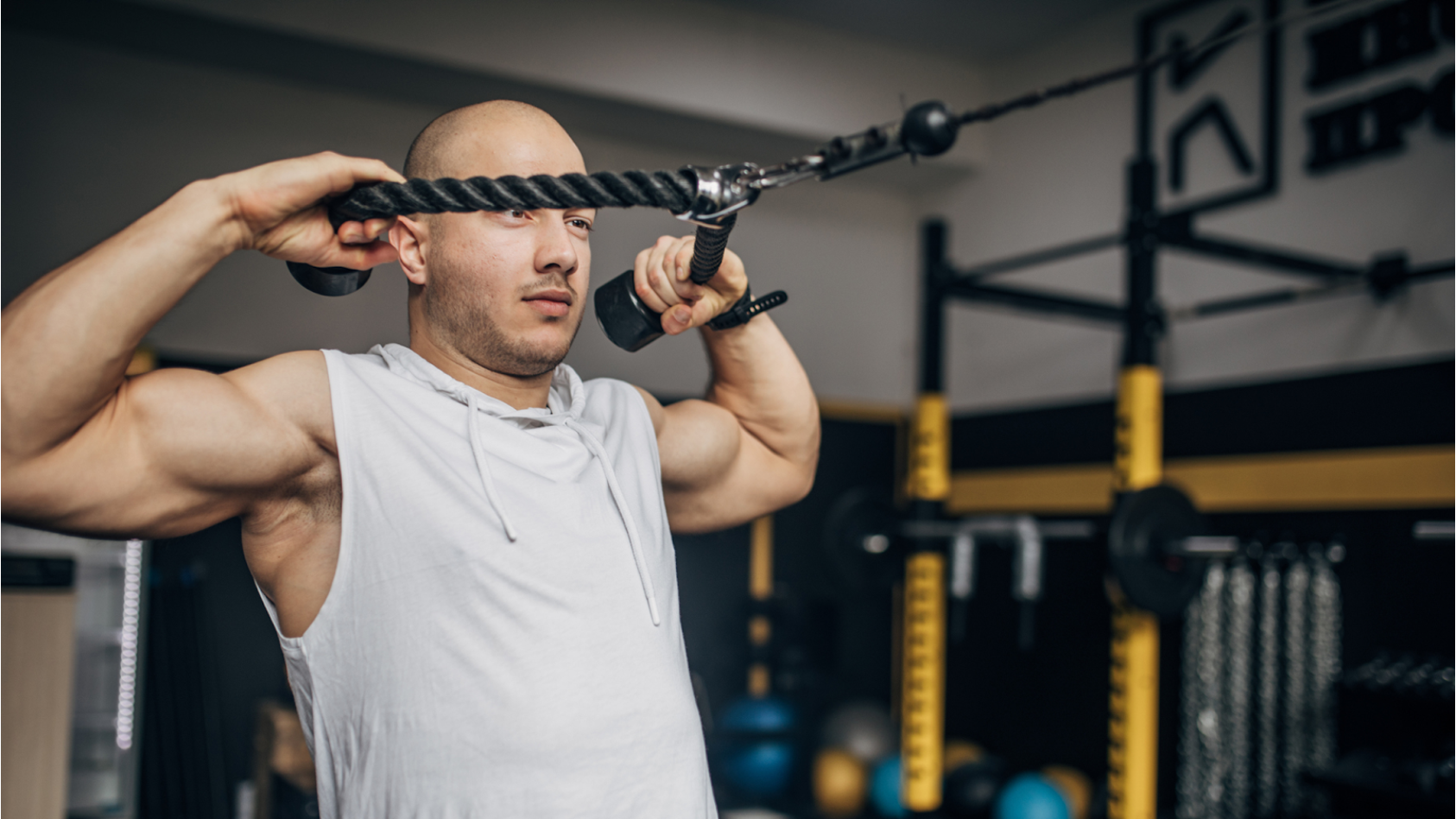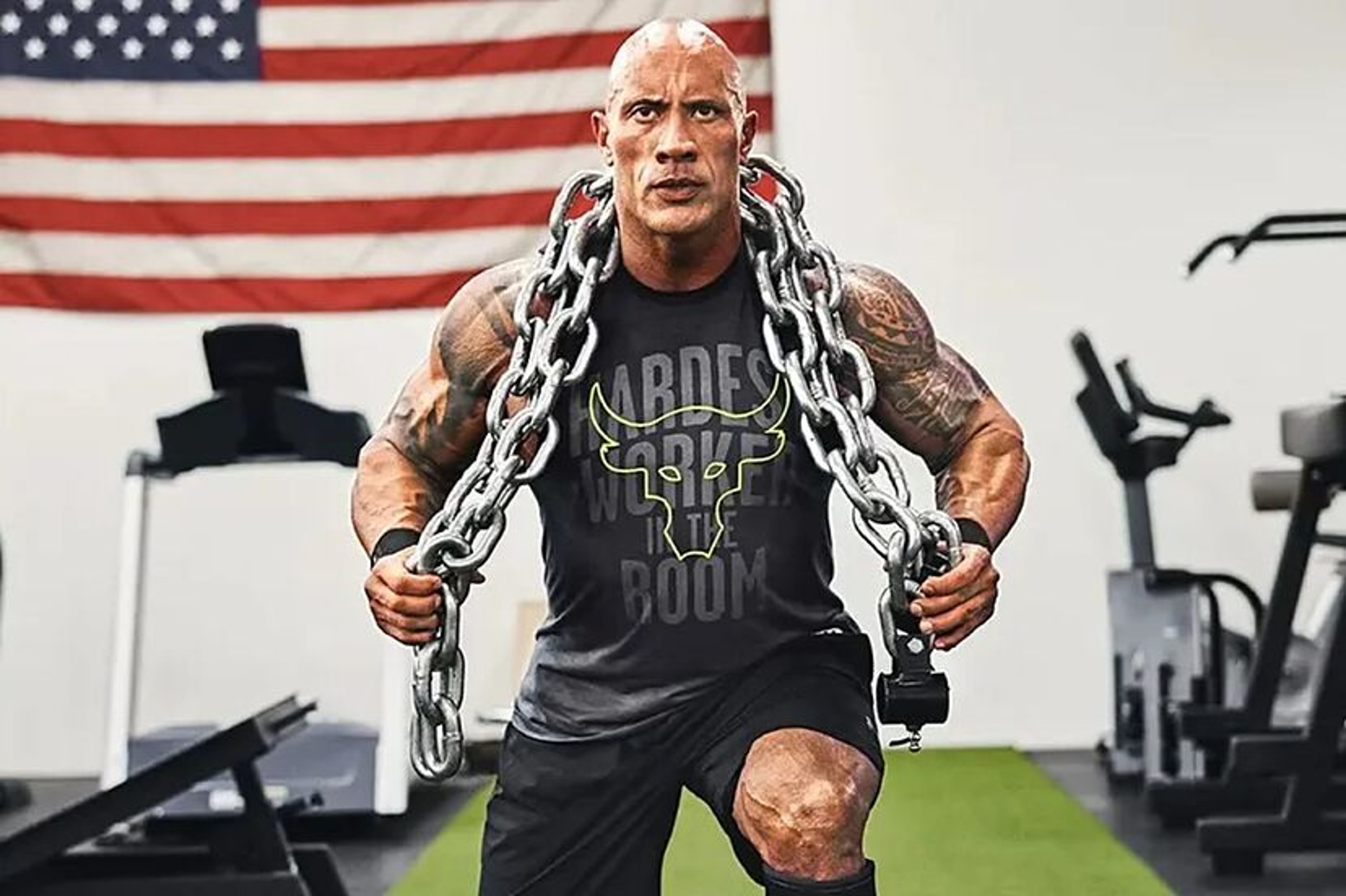Key Takeaways
- The Farmer's Walk involves carrying weights in both hands, targeting the entire body for a balanced workout.
- The Suitcase Carry focuses on holding weight in one hand, which helps improve core stability and balance.
- Both exercises build grip strength, but the Farmer's Walk also enhances endurance due to the bilateral load.
- Suitcase Carries are great for correcting muscle imbalances and are easier to start with for beginners.
- SOLE SW180 Adjustable Dumbbells are the perfect tool for progressing in both carrying exercises without needing multiple weight sets.
Farmer's Walk vs Suitcase Carry Overview
Farmer's Walk
Think of a farmer lugging heavy buckets of water across a field. Now replicate that with weights; you grab a heavy weight in each hand and walk. Simple, right? But don't let that fool you. This basic movement works almost every muscle in your body. Your grip, shoulders, core, and legs all kick in to keep you stable and moving forward.
Suitcase Carry
Now, imagine when you have to carry a suitcase in one hand down a flight of stairs. That's what the Suitcase Carry mimics. You hold a weight in one hand and walk. This might sound easier than the Farmer's Walk, but it adds a twist because the weight is on one side and your core has to work extra hard to keep you upright and balanced. It's a fantastic way to build one-sided (unilateral) strength and correct any muscle imbalances.
|
At SOLE, we're proud to offer the best exercise equipment for your home or gym. Our machines are built to meet the highest quality and performance standards, making them perfect for fitness enthusiasts at any level. SOLE Products
|
Benefits of Each Exercise
Both the Farmer's Walk and the Suitcase Carry prepare your body for real-life stuff, like carrying groceries or moving furniture. They also improve your posture and help prevent injuries. (Image courtesy of Men’s Health)
Farmer's Walk Advantages
- Builds total-body strength since the weights work both sides equally.
- Seriously boosts your grip strength, which helps with almost every other lift.
- Improves your endurance and even your cardio (try walking with heavy weights for a minute!)
- Makes everyday activities feel easier.
- Develops balanced, functional strength from head to toe.
Suitcase Carry Benefits
- Targets your core stabilizers, especially your obliques (side abs).
- Fixes muscle imbalances if one side of your body is weaker.
- Improves your posture and alignment.
- Is easier for beginners to start with (you can use a lighter weight).
- Trains your body to resist rotation and side-bending (great for sports).
Technique Differences
Farmer's Walk Form
To perform the Farmer's Walk, stand with your feet shoulder-width apart and hold a weight in each hand. Keep your shoulders back and your core engaged. Walk forward with steady, controlled steps. Your arms should hang naturally at your sides, and your grip should be firm.
Focus on maintaining a straight posture. Avoid leaning forward or backward. If you're new to this exercise, start with lighter weights and gradually increase as you build strength.
Suitcase Carry Form
Start by standing with your feet hip-width apart. Hold a weight in one hand, letting it hang naturally by your side. Engage your core to prevent leaning towards the side with the weight. Your shoulders should remain level, and your posture upright.
As you walk, focus on maintaining balance. Take slow, controlled steps, ensuring your core stays tight throughout the movement. This exercise is as much about core stability as it is about strength. If you're just starting, practice with a lighter weight to perfect your form before progressing to heavier loads.
Weight Recommendations
Choosing the Right Weight
For Farmer's Walk, a good starting point is about half your body weight (total). So if you weigh 160 pounds, try 40 pounds in each hand. Beginners should start lighter—maybe 25–30% of your body weight—and focus on form first.
For Suitcase Carry, start with about 20–25% of your body weight in one hand. The goal isn't just to hold the heaviest weight possible but to stay perfectly upright while you walk.
Progression Guidelines
For both exercises, you can progress in a few ways:
- Add more weight
- Walk further
- Walk longer
- Take smaller, more controlled steps
- Try uneven surfaces (if you're advanced)
Start with short distances like 30–40 feet. As you get stronger, increase either the weight or the distance. Listen to your body; if your form breaks down, the weight is too heavy.
Muscles Worked
Farmer's Walk Muscles
The Farmer's Walk hits:
- Forearms and grip (you'll feel this first)
- Shoulders and upper back
- Core (abs, obliques, lower back)
- Quads, hamstrings, and calves
- Traps (the muscles that shrug)
Suitcase Carry Muscles
The Suitcase Carry targets:
- Core muscles, especially the obliques on the side opposite to the weight
- Grip and forearm on the working side
- Shoulders, particularly the side without the weight (they work to keep you level)
- Glutes and legs as they stabilize your walking
- Lower back, which resists the side-bend the weight creates
Effective Training Tips
Always warm up before starting your carries. A simple dynamic warm-up involving movements like arm circles, leg swings, and light jogging can prepare your body for the workout. (Image courtesy of Men’s Health)
Incorporating into Workouts
Try these approaches:
- Do them at the end of your workout as a finisher
- Add them between sets of other exercises as active recovery
- Include them in a circuit with push-ups, squats, and other basics
- Dedicate one day a week to grip and carry training
For example, a simple workout might look like:
- Squats: 3 sets of 10
- Push-ups: 3 sets of 10
- Farmer's Walk: 3 sets of 40 feet with challenging weights
- Suitcase Carry: 2 sets of 40 feet on each side
Common Mistakes to Avoid
Form is everything. A common mistake is letting the weights pull your shoulders forward. This diminishes the effectiveness of the exercise and increases the risk of injury. Keep your shoulders back and chest up to maintain proper posture.
Another mistake is rushing the movement. Speed isn't the goal here; control is. Move slowly and deliberately, focusing on each step. This helps engage the correct muscles and ensures you're getting the most out of the exercise.
Master These Carries at Home with SOLE Premium Equipment
SOLE adjustable dumbbells eliminate the need for multiple weight sets, letting you quickly modify resistance for both Farmer's Walks and Suitcase Carries within a single workout session.
Want to build serious functional strength without a gym membership? SOLE home equipment makes these simple but powerful exercises even more effective. The SW180 Adjustable Dumbbells are perfect for both carries, with 16 weight options from 5–80 lbs in each hand. This means you can start light with Suitcase Carries, then quickly dial up the resistance for Farmer's Walks without cluttering your home with multiple dumbbells.
The magic of SOLE's adjustable system is how it supports your progression. As your grip strength improves (and it will, fast), simply turn the dial to add more weight. No more hitting plateaus because you don't have the next dumbbell size up. You can increase in small increments that keep you challenged without compromising form.
If you’re concerned about floor protection, the SOLE Equipment Mat provides the perfect surface for your carries. At 36.5" x 78", it gives you enough runway for short carries while protecting your floors from potential dumbbell drops. The non-slip surface ensures stable footing during your walks, crucial for maintaining proper form.
As an added bonus, our SOLE+ App is included with your purchase and provides guided tutorials showing exactly how to perform both Farmer's Walks and Suitcase Carries with proper technique.
Frequently Asked Questions (FAQs)
How do I choose the right weights?
Start lighter than you think and nail the form first. For the Farmer's Walk, begin with about 25–30% of your body weight total if you're new. For the Suitcase Carry, try 15–20% of your body weight in one hand. If you can walk more than 60 seconds without needing to put the weights down, go heavier. If you can't make it 20 seconds with good form, go lighter.
Can beginners try these exercises?
Absolutely! Both exercises work great for beginners if you start with the right weight. These moves help build a foundation of strength that makes every other exercise better. Just start light and focus on staying tall and controlled.
How often should I do these carries?
Add carries to your routine 2–3 times per week. This gives you enough practice to improve while allowing recovery time. If you're just starting, once a week is fine. Listen to your body and rest when needed.
Do carries help with core strength?
YES! Especially the Suitcase Carry. Your core has to fight against the weight pulling you sideways, which hits your abs and obliques in a way crunches never will. Even the Farmer's Walk forces your core to stabilize your spine under load, which builds functional core strength.
How do SOLE’s adjustable dumbbells compare to traditional dumbbells for carrying exercises?
SOLE SW180 Adjustable Dumbbells actually offer several advantages over traditional fixed dumbbells for carries. The biggest benefit is progressive overload; you can increase weight in precise 5-pound increments instead of making the typical 5–10 pound jumps between fixed dumbbells. This matters because grip strength often improves gradually, and the perfect weight might fall between standard dumbbell sizes.
The balanced construction is crucial for Suitcase Carries, where any uneven weight distribution would force you to compensate with altered posture.




Leave a comment
This site is protected by hCaptcha and the hCaptcha Privacy Policy and Terms of Service apply.